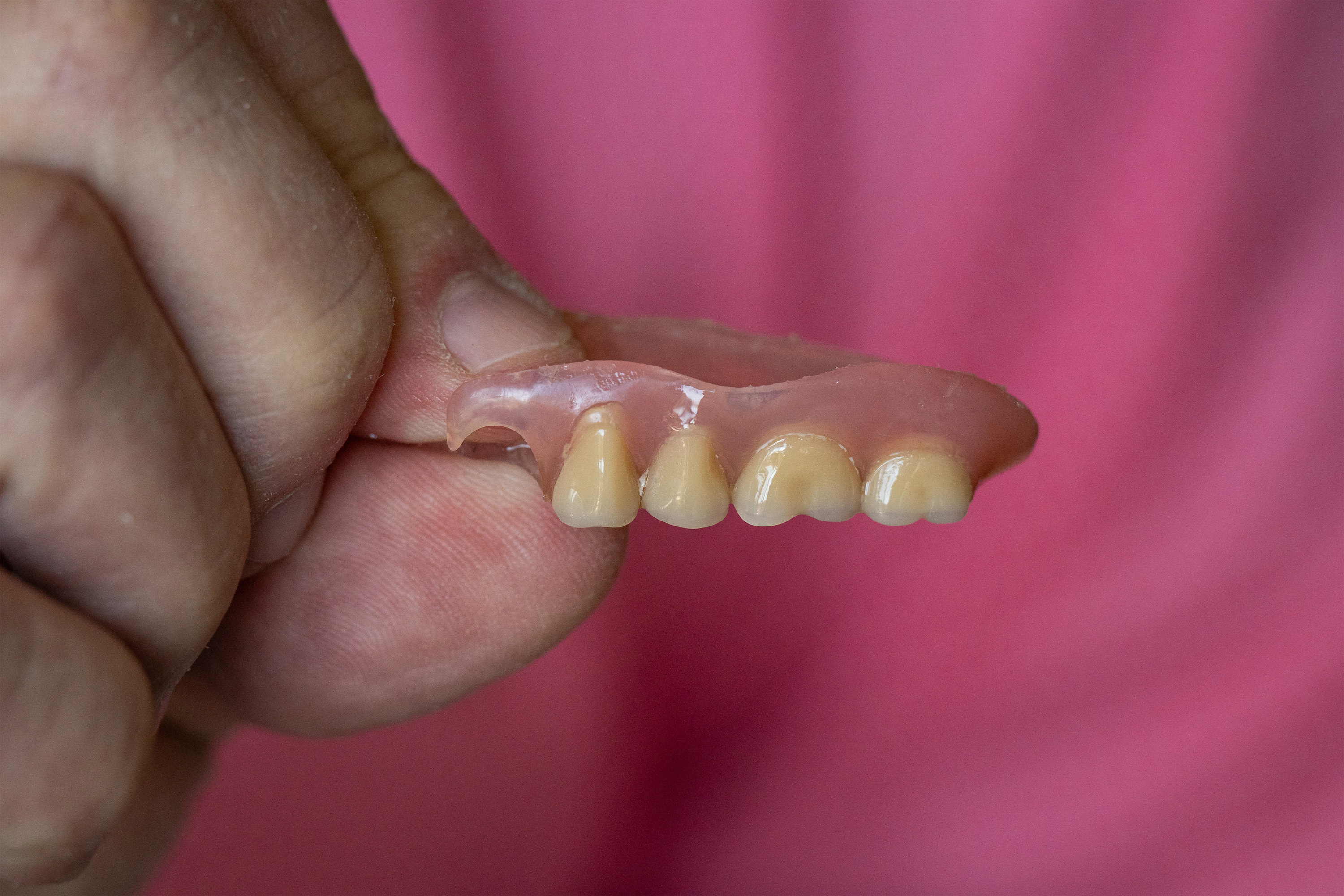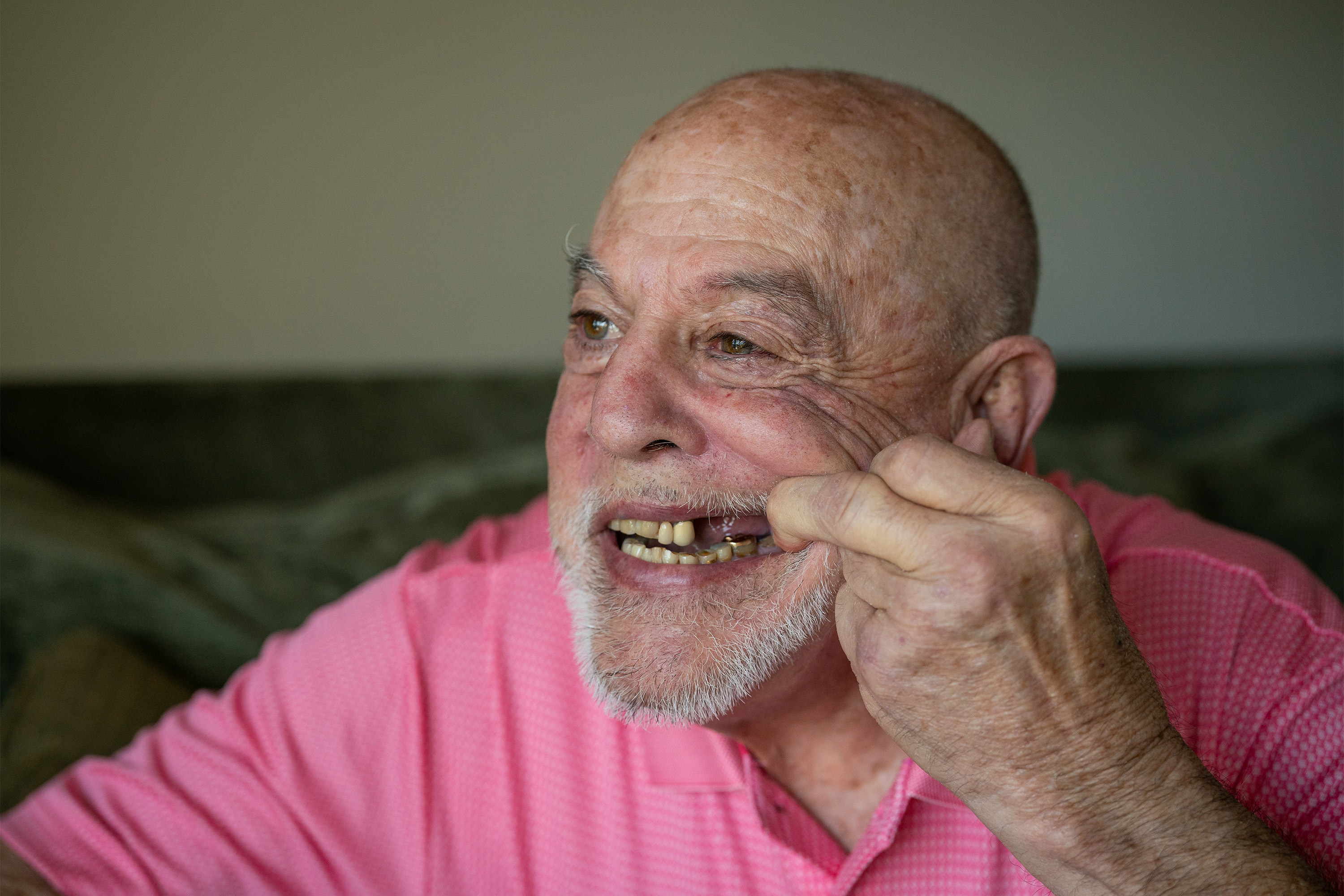SAN RAFAEL, Calif. — When Bobby Moske went to a community clinic a few years ago with a toothache, he couldn’t find a dentist in Marin County willing to take Medicaid to do a root canal.
Marin Community Clinics referred the 75-year-old to a dentist about 20 miles away in San Francisco, but his tooth decayed while he waited months for authorization to cover the procedure. In the end, his tooth was pulled.
It was the sixth time in a decade Moske had lost a tooth for lack of dental care, he said. The behavioral health peer specialist wears a denture that must be removed at mealtime, making eating a chore. He often struggles to mash food between his gums, and he limits his diet to things he can easily chew. Nuts and steak, for instance, are off the table. It can be embarrassing to sit down for a meal with clients or colleagues.
“I feel like I give off the impression of somebody who doesn’t take care of himself, and I do take care of myself,” Moske said. “I try very hard. So, when I go out, I try not to smile.”
California is among a growing number of states that provide comprehensive dental benefits to adults enrolled in Medicaid, and some lawmakers want to add more dental cleanings, examinations, and implants to the safety-net program. Yet many dentists don’t accept Medi-Cal, the state’s Medicaid program, so new benefits would offer no guarantee that patients could get care.
The UCLA Center for Health Policy Research found that 21% of California dentists saw Medi-Cal patients of all ages, according to data from 2019 to 2021. Often those dentists limit the number of Medi-Cal patients they will see, meaning only 15% of adults might get dental care in any given year, said Elizabeth Mertz, a dentistry professor and medical sociologist at the University of California-San Francisco.
“The issue is you have coverage that is useless,” Mertz said. “The state does provide coverage, but almost no dentist will accept it.”
One of the bills moving through the California Legislature would expand Medi-Cal coverage of dental implants — artificial tooth roots implanted into the jawbone that support artificial teeth — and crowns, giving patients with broken or missing teeth more options.
Currently, Medi-Cal covers implants only when “exceptional medical conditions are documented,” according to the state’s 2024 benefits guide. It’s unclear how many private dental plans cover implants, but preliminary research has shown about half of individuals enrolled in a PPO plan nationwide have some type of coverage, said Mike Adelberg, executive director at the National Association of Dental Plans.
Under the bill, introduced by Democratic Sen. Aisha Wahab, Medi-Cal patients could qualify for an implant if their dentist determines it is the best option to replace a missing tooth.
“If you need an implant, you should be able to get it, especially our most vulnerable,” Wahab said. “The poorest of the poor in California deserve this.”
The Senate passed the bill unanimously in May, and a vote is pending in the Assembly Appropriations Committee. Elana Ross, a spokesperson for Democratic Gov. Gavin Newsom, declined to comment on the bill.
Four in 10 U.S. adults have had permanent teeth pulled, according to an analysis by the Centers for Disease Control and Prevention. The CDC also reports that low-income older adults are at higher risk for tooth loss, which can cause discomfort and affect eating and speaking. The fix can be prosthetic devices, such as bridges and dentures, or replacement teeth, but they can be costly, especially for those without insurance or on government programs with limited benefits.

While the alternatives might be a better fit for some patients, implants are “the standard of care,” said Sohail Saghezchi, director of UCSF’s oral surgery residency program.
“They’re not able to eat everything that they want, and, a lot of times, foods like vegetables and fruits are harder to eat,” he said.
The Department of Health Care Services, which oversees Medi-Cal, estimates it would cost between $4 billion and $7 billion a year for about 1.5 million implants — a price tag Wahab fears could be problematic since Newsom in June signed a state budget closing an estimated $46.8 billion deficit.
The cost of an implant varies widely. DHCS estimates it would reimburse dentists between $3,000 and $4,500 for each implant surgery. FAIR Health, a national nonprofit that estimates health costs, reported a median charge for a typical implant in California between October 2022 and September 2023 ranged from about $4,000 to $4,800. Location matters, too. In San Franciso, for example, an implant is closer to $8,000, Saghezchi said.
“Reimbursement rates need to cover the costs of providing the service,” said Alicia Malaby, a spokesperson at the California Dental Association. “As with any Medi-Cal benefit, coverage is not meaningful unless the state is willing to fully invest in it to ensure people can actually access the care they need.”
The California Dental Association, which does not support the current bill, has raised concerns about the invasiveness of implant surgery, which requires regular follow-up appointments. It’s sponsoring legislation to require Medi-Cal to cover a standard two teeth cleanings and examinations a year for people 21 and older, as opposed to one.
DHCS spokesperson Leah Myers said the state has increased Medi-Cal reimbursements to dentists since the passage of Proposition 56 in 2016 and created a web-based app to enlist more dentists. More than 14,000 dentists — about 40% — were enrolled in the Medi-Cal program, as of July, according to the latest numbers published by the Dental Board.
But for people such as Moske, finding a dentist and getting needed care feels impossible. In most of California, 3 in 4 Medi-Cal patients 21 and up didn’t have a dental appointment in 2023, according to DHCS.
When Moske testified in support of the implant bill in June, he took out his denture, held it up to show lawmakers, and opened his mouth.
“I’m here to show you something,” Moske said. “Please don’t be offended. These are the teeth I lost.”

After Moske had finished speaking, Assembly member Reggie Jones-Sawyer (D-Los Angeles) turned to his fellow members and removed his own denture.
“I know exactly what you went through,” he said. “I have dental insurance from the city of Los Angeles and the state of California and still had problems getting things covered. I thank you for being brave enough to let people know.”
This article was produced by KFF Health News, which publishes California Healthline, an editorially independent service of the California Health Care Foundation.

